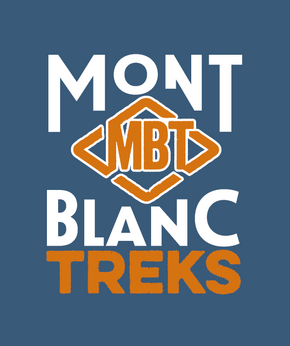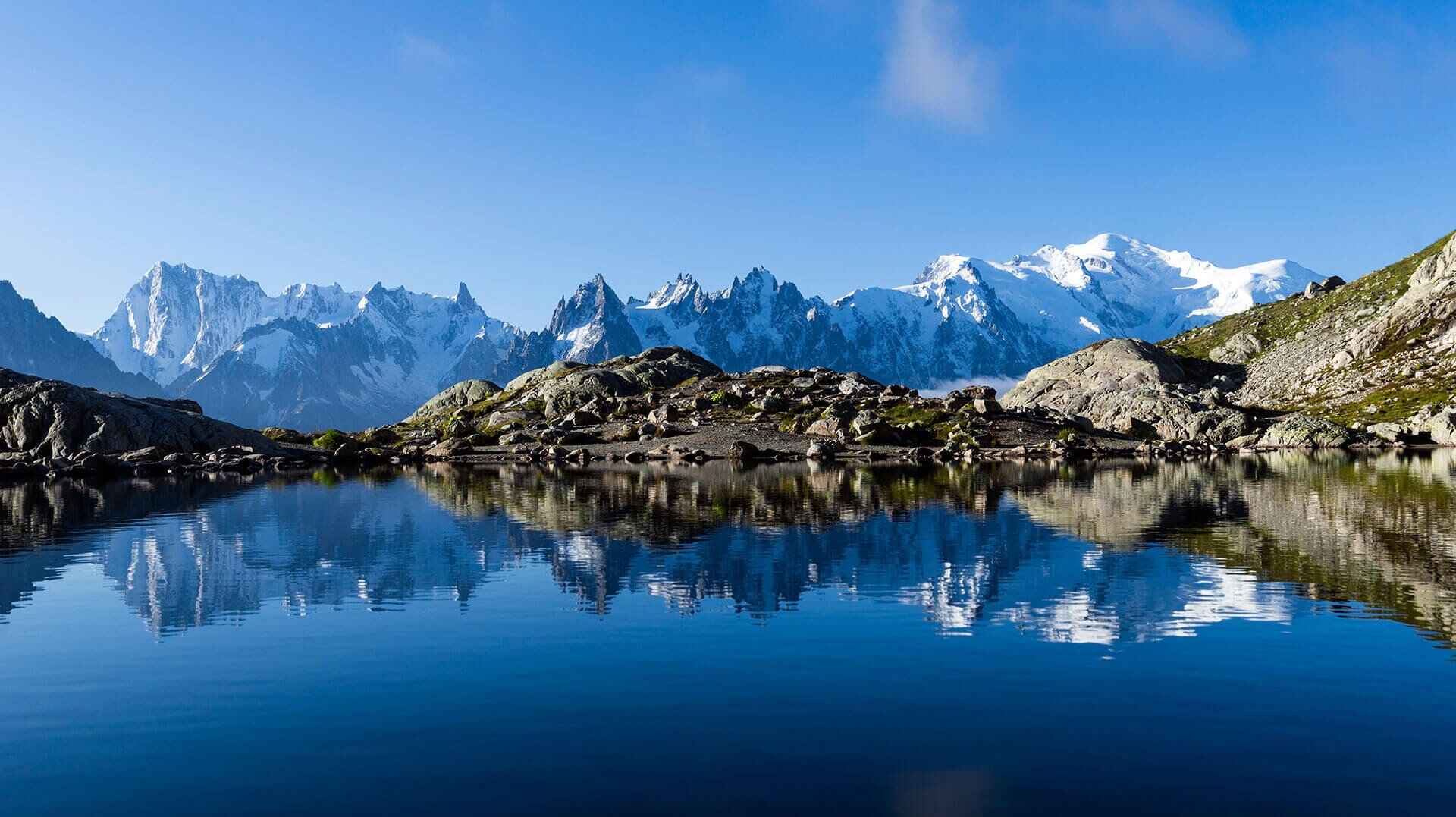The history
Since the 18th century, explorers, scientists and geologists have been drawn to this area of stunning beauty. The draw of Mont Blanc and all its neighbouring peaks, aiguilles, glaciers and valleys was too hard to resist. Many of the routes through the Alps and over the cols date back to the old trading routes of centuries past. The first circumnavigation of the Mont Blanc range was back in 1767 by Horace Benedict de Saussure, who set out with a group of friends and porters from Chamonix, on a scientific Mont Blanc expedition to gain further knowledge of its geographical structure. During the Victorian age, the Tour du Mont Blanc became a must-do for the rich and famous, albeit on the back of a mule. Since then, trekking Mont Blanc has become one of the most popular long-distance trails in the European Alps.
The Tour du Mont Blanc in Europe
The starting point of Tour du Mont Blanc is Chamonix, which is located in the French Alps. The Mont Blanc circuit is situated in the Western Alps and within Haute Savoie and Savoie regions of France, Italian Aosta and the Swiss canton of Valais. The TMB starting point is an hour’s distance from Geneva, and can also be accessed via other major airports from Lyon, Turin and Milan with slightly longer transfer times. The rail and road networks make travelling to Chamonix fairly straight forward and hassle free.
The Tour du Mont Blanc statistics
Tour du Mont Blanc is the most popular long-distance trek in Europe that covers a total distance of approximately 170km depending on which route is taken (some variants can be sorter or longer than the original section). The daily height gain on the Mont Blanc circuit is substantial, and overall the accumulation over the 10 days is in the region of 9,000m. The TMB route takes you over 8 mountain cols and through 3 Alpine regions within France, Italy and Switzerland, circumnavigating the Mont Blanc. The scenery is second to none, from the broken rocky lunar landscape of the Aiguille Rouges to the pasturelands of the Contamines valley; every day has something different to offer, yet there is one common factor - the constant backdrop of the Mont Blanc range.
The route in brief
If you look at a map of the area, the Mont Blanc range forms a compact mass of complex mountain structures, passable via a circular route making use of its surrounding valleys and relatively low level cols or mountain passes. Traditionally, the Tour du Mont Blanc starts and finishes in the Chamonix Valley and moves anti-clockwise through France, Italy and Switzerland and returns in to the Chamonix valley for the last few days of the trek. Over time, all manner of variants have been included. For example, Col de Tricot from Les Houches to Contamines or Fenetre d'Arpette from Chapex-Lac to Trient. Often these variants make the TMB more challenging with more height gain and descent and tougher terrain. The Mont Blanc circuit is often undertaken in reverse and can seem very different when done in the opposite direction.
Villages & Hamets on the Tour du Mont Blanc
Chamonix, France: Steeped in history, Chamonix is the mountaineering and off-piste skiing capital of the world. It is truly a stunning place tucked in under Western Europe’s highest peak. For centuries explorers, scientists and mountaineers have travelled here to get up close to this impressive environment.
Les Houches, France: A much smaller and quieter village in the Chamonix Valley, and yet Les Houches shares the same stunning views of the Mont Blanc massif. It has good facilities, restaurants, bars, supermarkets and shops.
Les Contamines, France: Les Contamines is a charming little village on the westerly end of Mont Blanc. It has good facilities, restaurants, bars, supermarkets and shops, and offers great views of the Aiguille du Bionnassay and Domes du Miage.
Chapieux & Ville des Glaciers, France: Chapieux & Ville des Glaciers are tiny hamlets on the southwesterly tip of the circuit and probably one of the most remote places on the tour. The valley and its hamlets are totally cut off in winter. Chapieux offers 1 auberge, 1 little shop and a campsite and Ville des Glaciers a refuge and cheese farm which sell fabulous Beaufort cheeses.
Courmayeur, Italy: Charming, Italian-style Alpine town, Courmayeur is definitely on a par with Chamonix with great food, wine and coffee. All facilities are available here.
La Fouly, Switzerland: Small village in the Swiss Val Ferret, La Fouly has great views of Tour Noir and Mont Dolent. The village offers basic facilities, a shop and a few hotels with bars.
Champex-Lac, Switzerland: Champex-Lac is situated at the easterly end of the TMB. This is a typical picture postcard Swiss village with a beautiful lake. A lovely, relaxing enclave with a range of bars, restaurants and shops.
Trient, Switzerland: Trient is a small Swiss village with limited facilities. The village enjoys fabulous views of the Trient Glacier.
Argentiere, France: Situated at the easterly end of the Chamonix Valley, Argentiere is nested under the famous Grand Montets off-piste and extreme ski area. Argentiere shares the same history as the rest of the Chamonix Valley. It is a lively place in peak season and has a good range of restaurants, bars and shops.




